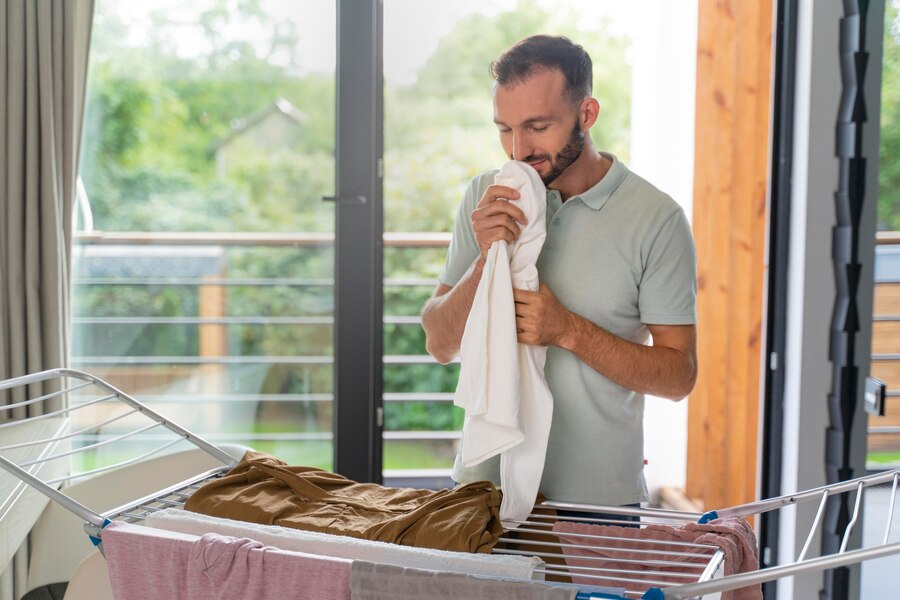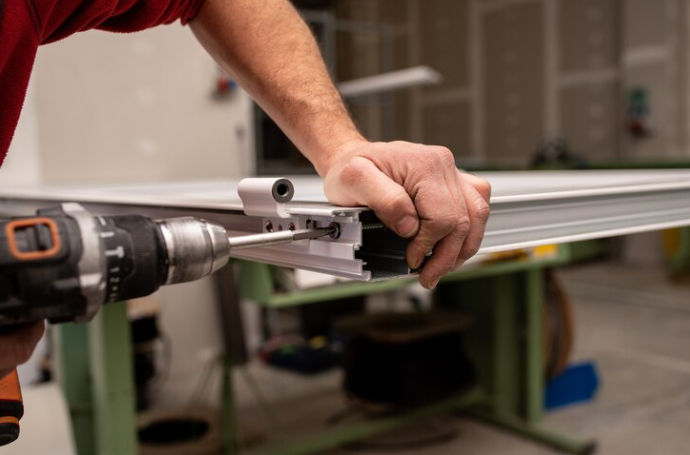As the weather warms up and the days grow longer, it’s natural to want to open up your home and enjoy the fresh breeze. However, with open windows and doors come unwelcome visitors in the form of flies, mosquitoes, and other pesky insects. Fly screens and insect nets provide the perfect solution, allowing you to keep your living spaces well-ventilated without the nuisance of bugs. In this detailed guide, we will explore everything you need to know about fly screens and insect nets, from their benefits and types to installation and maintenance tips.
What Are Fly Screens and Insect Nets?
Fly screens and insect nets are protective mesh barriers designed to fit over windows, doors, and other openings to prevent insects from entering while still allowing air and light to pass through. They are made from a variety of materials, such as fibreglass, aluminium, or polyester, and come in different sizes and styles to suit various applications.
These screens are especially useful in areas where insect activity is high, providing a simple yet effective way to keep your home insect-free. Unlike chemical repellents or insecticides, fly screens and insect nets offer a non-toxic and environmentally friendly solution to insect control. They are easy to install and can be customised to fit almost any window or door.
The Benefits of Fly Screens and Insect Nets
Fly screens and insect nets offer numerous benefits that enhance both comfort and health in your home. Here are some of the key advantages:
1. Pest Control
The primary benefit of fly screens and insect nets is their ability to keep insects out of your home. This is particularly important in warmer months when insects such as flies, mosquitoes, and wasps are more active. By installing these screens, you can prevent bites, stings, and the spread of insect-borne diseases, such as West Nile virus or malaria.
2. Improved Airflow and Ventilation
Fly screens allow you to enjoy the fresh air without compromising on protection. They enable you to keep your windows and doors open, promoting natural ventilation and helping to regulate indoor temperatures. This can reduce your reliance on air conditioning, leading to lower energy bills and a more comfortable living environment.
3. Reduced Use of Insecticides
By keeping insects out, fly screens can reduce or eliminate the need for chemical insecticides and repellents, which can be harmful to both human health and the environment. This makes them a safer and more sustainable option for insect control, particularly in homes with children or pets.
4. Enhanced Natural Light
Fly screens are designed to be virtually invisible, allowing natural light to enter your home without obstruction. This means you can enjoy bright, airy spaces without worrying about insects entering. Unlike heavier window treatments, screens do not block or filter light, maintaining a pleasant indoor atmosphere.
5. Increased Security
Some fly screens are made from reinforced materials that add an extra layer of security to your home. While they are not a substitute for security doors or bars, they can serve as a deterrent to opportunistic intruders and provide peace of mind when windows and doors are left open.
6. Allergen Control
In addition to keeping out insects, fly screens can also help reduce the amount of pollen and dust entering your home, making them beneficial for people with allergies or asthma. Special pollen screens are available that can filter out airborne allergens, improving indoor air quality.
7. Versatility and Aesthetic Appeal
Fly screens and insect nets come in a wide range of styles, colours, and materials, allowing you to choose a design that complements your home’s decor. From minimalist fixed screens to elegant retractable models, there is a solution for every type of window and door.
Different Types of Fly Screens and Insect Nets
There are various types of fly screens and insect nets available, each suited to different needs and preferences. Understanding the different types will help you choose the right solution for your home.
1. Fixed Fly Screens
Fixed fly screens are permanently attached to the window frame and cannot be opened or removed easily. They are ideal for windows that do not require frequent access, such as bathroom windows or skylights. Fixed screens are durable and provide consistent protection, but they may not be suitable for windows that need regular cleaning or access.
2. Hinged Fly Screens
Hinged fly screens are attached to the window or door frame with hinges, allowing them to open and close like a door. This makes them suitable for windows and doors that require frequent access, such as kitchen windows or front doors. Hinged screens can be easily opened to reach the window for cleaning or maintenance, and they close securely to keep insects out.
3. Sliding Fly Screens
Sliding fly screens are designed to move along a track, making them perfect for large windows, sliding glass doors, or patio doors. These screens offer a convenient way to keep bugs out while allowing easy access to the outdoors. Sliding screens are a popular choice for homes with large openings, as they provide a smooth, seamless operation.
4. Retractable Fly Screens
Retractable fly screens can be pulled down or across when needed and retracted into a discreet casing when not in use. They are highly versatile and ideal for windows and doors of all sizes. Retractable screens are particularly useful for areas where you want an unobstructed view or access when the screen is not needed, such as for large bi-fold or French doors.
5. Magnetic Fly Screens
Magnetic fly screens use magnetic strips to attach the screen to the window or door frame. They can be easily removed and reattached, making them a convenient option for windows that are opened and closed frequently. Magnetic screens are also a great choice for renters, as they do not require permanent fixtures.
6. Mesh Curtains
Mesh curtains consist of two overlapping pieces of mesh that hang from the top of a door frame. They allow you to walk through without using your hands, and they automatically close behind you. Mesh curtains are ideal for high-traffic doorways, such as between the kitchen and garden, and are a cost-effective solution for keeping bugs out while allowing easy access.
Choosing the Right Fly Screen or Insect Net for Your Home
Selecting the right fly screen or insect net involves considering several factors, including the type of window or door, your specific needs, and your budget. Here are some tips to help you make the best choice:
1. Type of Window or Door
Consider the type and size of the window or door where the screen will be installed. Fixed screens are ideal for smaller windows, while sliding or retractable screens are better suited for larger openings, such as patio doors. Ensure that the screen can be easily operated and provides full coverage for the opening.
2. Level of Use and Access
Think about how often you will need to open or close the window or door. For windows that require frequent access, such as kitchen windows, a hinged or magnetic screen may be the best option. For doors that open onto outdoor spaces, retractable or sliding screens offer ease of use and flexibility.
3. Mesh Type and Durability
The material of the mesh is important for the durability and effectiveness of the screen. Fibreglass is a popular choice due to its flexibility and resistance to rust and corrosion. Aluminium mesh is more robust and ideal for areas exposed to harsh weather conditions. For added security, some screens are made with stainless steel mesh, which is difficult to cut or damage.
4. Aesthetic Considerations
Fly screens should complement your home’s design and not detract from its appearance. Choose a screen that matches the colour and style of your window or door frames. Retractable screens are a good option for those who want a clean look, as they can be hidden away when not in use.
5. Budget
Fly screens and insect nets come in a range of prices, from affordable DIY kits to custom-made screens with premium materials. Consider your budget and the level of protection you need to find a solution that offers the best value for your money.
How to Install Fly Screens and Insect Nets
Installing fly screens and insect nets can be a simple DIY project, especially with pre-made kits. However, for custom installations or complex setups, professional installation may be necessary. Here’s a step-by-step guide to installing basic fly screens:
1. Measure the Window or Door
Accurate measurements are crucial for a proper fit. Measure the width and height of the opening, and consider any obstructions, such as handles or locks, that may affect the installation. For sliding or retractable screens, ensure you have enough space for the tracks or casing.
2. Choose the Appropriate Screen
Select a screen type that suits the window or door and meets your needs. Make sure the screen is slightly larger than the opening to ensure full coverage. If you’re using a pre-made kit, check that it includes all necessary components, such as frames, mesh, and fixing materials.
3. Prepare the Area
Clean the window or door frame thoroughly before installation. Remove any dirt, dust, or debris that could interfere with the adhesive or mounting hardware. If necessary, sand down rough edges to create a smooth surface for the screen.
4. Install the Screen
Follow the manufacturer’s instructions for your specific screen type. For fixed screens, attach the frame to the window or door with screws or clips. For magnetic screens, attach the magnetic strips to the frame and align the screen with the magnets. For retractable screens, install the tracks or casing according to the instructions and ensure the screen rolls smoothly.
5. Test and Adjust
After installation, test the screen to ensure it operates smoothly and provides a secure barrier against insects. Check for any gaps or areas where insects could enter, and make any necessary adjustments to the fit or tension of the screen.
Maintaining Fly Screens and Insect Nets
Proper maintenance will ensure that your fly screens and insect nets remain effective and in good condition for years to come. Here are some tips for maintaining your screens:
1. Regular Cleaning
Dust and dirt can accumulate on the mesh, reducing airflow and visibility. Use a soft brush or vacuum cleaner with a brush attachment to remove dust regularly. For a deeper clean, remove the screen and wash it with mild detergent and water. Rinse thoroughly and allow it to dry completely before reattaching.
2. Check for Damage
Periodically inspect your screens for any signs of wear and tear, such as holes in the mesh or loose frames. Small holes can be repaired with a screen repair kit, while more extensive damage may require replacing the screen altogether. Address any issues promptly to maintain effective insect protection.
3. Lubricate Moving Parts
If your screens have moving parts, such as hinges or tracks, lubricate them with a silicone spray to ensure smooth operation and prevent rust or corrosion. Avoid using oil-based lubricants, as they can attract dirt and debris.
4. Store Screens Properly
If you remove your screens during the winter or when not in use, store them flat in a dry, cool place. Avoid placing heavy objects on top of them, as this can cause the frames to bend or the mesh to tear. Proper storage will help extend the life of your screens and keep them in good condition.
Conclusion
Fly screens and insect nets are a practical and effective solution for keeping your home free from unwanted insects while allowing fresh air and natural light to flow in. With various types and materials available, you can find the perfect screens to suit your needs and enhance your home’s comfort. Whether you’re looking to prevent insect bites, reduce allergens, or simply enjoy a bug-free summer, fly screens provide a cost-effective and environmentally friendly way to protect your living spaces. By choosing the right screens for your home and following proper installation and maintenance practices, you can create a safe and comfortable environment for your family to enjoy all year round.







